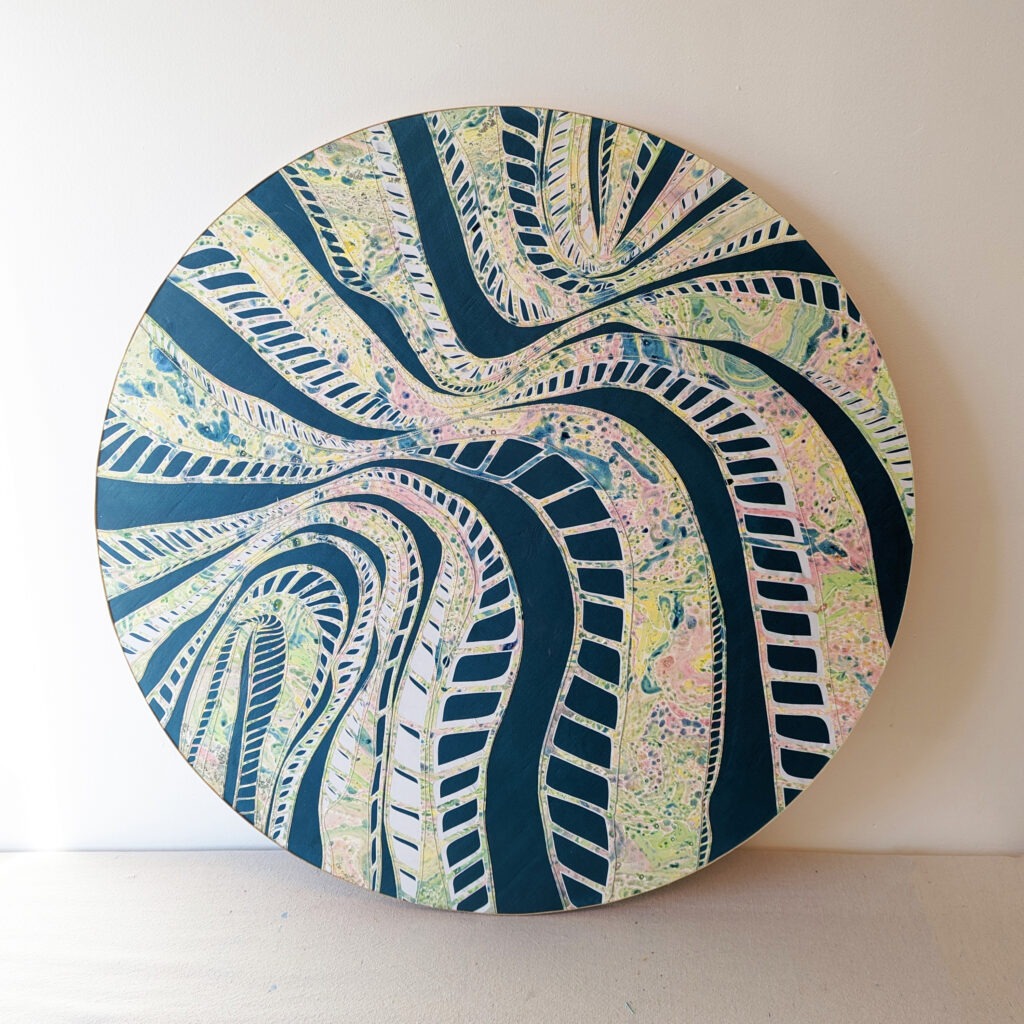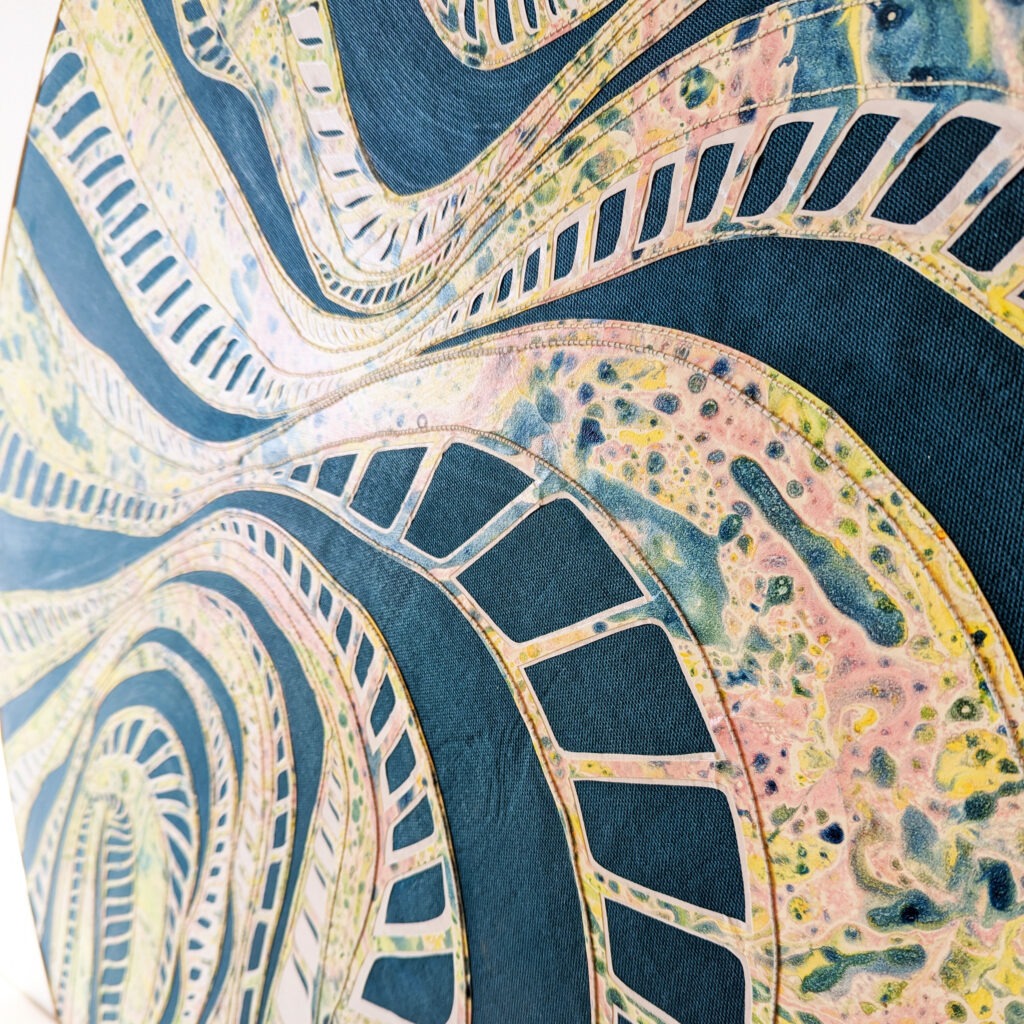Rainbow Forest Panel IV
This 32″ round panel is the fourth in a series of couched and hand-cut mixed media pieces inspired by the Rainbow Forest area of Petrified Forest National Park in Arizona. Rainbow Forest Panel IV includes two layers of paper and one layer of cotton duck cloth, stitched together with a sewing machine with pearl cotton thread in the bobbin and then hand cut on the front of the piece. Near the Painted Desert, the layers, swirling colors, intricate macro and micro patterns, and outrageous mineral formations in this area of the southwest US are an unending source of inspiration for me and many artists. Unfortunately, visitors have been stealing the mineral wealth of the national park for a century or more, so if you visit, please take only pictures, leave only footprints, and kill nothing but time. See my other Rainbow Panels here and this and other available work here.


“Over 13,000 years of human history can be found in the park, including over 800 archeological and historic sites.
PEFO – National park Service
“Puerco Pueblo was built by the ancestral Puebloan people, occupied between A.D. 1200 and 1400. Agate House was occupied about A.D. 1100-1150 and was built out of pieces of petrified wood.
“Herbert David Lore built Painted Desert Inn (aka the Stone Tree House) by 1924. Using designs by National Park Service architect Lyle Bennett, the Civilian Conservation Corps (CCC) reconstructed the Painted Desert Inn in the late 1930s. From 2004-2006 the building had an extensive rehabilitation, returning the inn to its 1949 appearance. It was placed on the National Register of Historic Places in 1976 and became a National Historic Landmark in 1987.
Petrified Forest National Park is the only national park site that contains a segment of the Historic Route 66 alignment. Part of the National Old Trails Highway also passed through the park.
“Exposed at Petrified Forest is one of the most continuous sections of Triassic-aged rocks anywhere in the world. These rocks were deposited by enormous rivers between 208 and 225 million years ago and include an incredible diversity of fossils. The Chinle Formation of the Triassic Period is the main geologic formation of the park. The Bidahochi Formation outcrops in the north, laid down during the Miocene and Pliocene of the Quaternary Period, about 3-8 million years ago.
When the trees died, they washed into an ancient river system and formed log jams, buried sediment. Minerals, including silica dissolved from volcanic ash, absorbed into the porous wood over hundreds and thousands of years crystallized within the cellular structure, replacing the organic material as it broke down over time. If there were larger spaces such as a hollow or crack in the logs, crystals of clear quartz, purple amethyst, yellow citrine, and smoky quartz formed.
“The brilliant colors in the petrified wood come mainly from trace minerals. Pure quartz is white, manganese oxides form blue, purple, black, and brown, and iron oxides provide hues from yellow through red to brown and black.”
